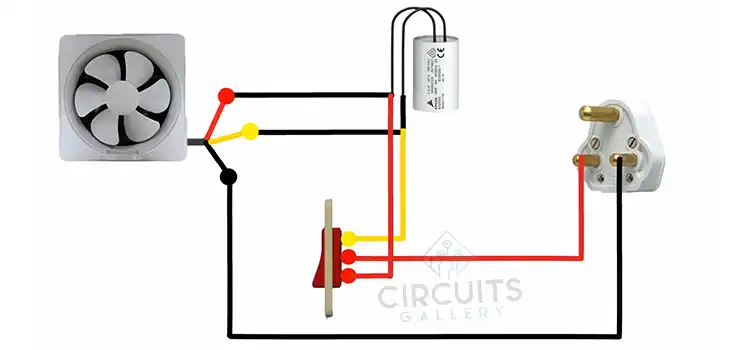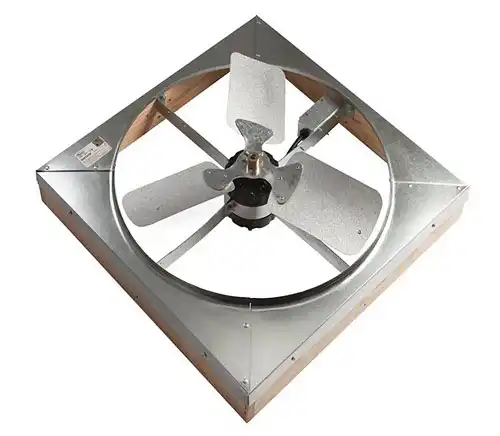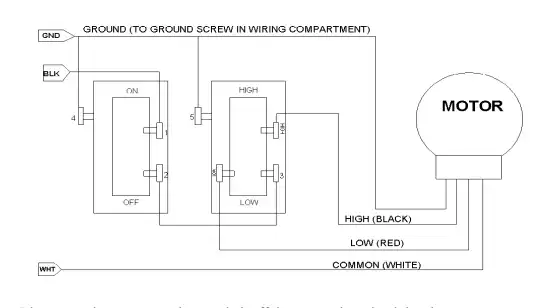In-Depth Guide Of Whole House Fan Wiring Diagram
Efficiently cooling your entire home through a whole house fan involves a crucial understanding of its wiring configuration. We focused on a detailed whole house fan wiring diagram, shedding light on the intricate connections and components. our guide will provide clarity on switch connections, motor wiring, and overall safety measures.
Additionally, we’ll delve into maintenance tips, ensuring the continued optimal performance of your whole house fan. Empower yourself with the knowledge to enhance your home’s comfort, energy efficiency, and the long-term functionality of your cooling system.

What Exactly is a Whole House Fan?
Whole house fans are ingenious devices designed to cool your entire house using a natural, energy-efficient process. They work by drawing in cool, outdoor air and expelling the hot indoor air, creating a refreshing indoor environment.

Figure: Whole House Fan.
Why Do You Need a Wiring Diagram?
A wiring diagram is your roadmap to ensure that your whole house fan operates efficiently and safely. It lays out all the connections, helping you avoid costly mistakes and ensuring the system works as it should.
Tools And Materials Need To Wire Whole House Fan
Before you start, gather the necessary tools and materials for the job given below:
- Whole House Fan: The heart of your system.
- Wires: Ensure you have the right gauge and length.
- Electrical Boxes: To enclose and protect connections.
- Circuit Breaker: For safety and control.
- Wall Switch: To control the fan manually.
- Screwdrivers: You’ll need various types, including flathead and Phillips.
- Wire Strippers: Essential for safely stripping the insulation from wires.
- Wire Nuts: To securely connect wires.
- Electrical Tape: For insulating and securing connections.
Whole House Fan Wiring Diagram With Connection
Let’s see the whole house fan wiring diagram and part by part the steps:

Figure: Whole House Fan Wiring Diagram.
Wiring the Fan Motor
Understanding the motor is crucial. You’ll need to connect it properly to ensure your fan runs efficiently.
- Start by identifying the fan motor’s wires. These typically include a common (C), high-speed (H), and low-speed (L) wire.
- Connect the common wire to the neutral wire in your electrical panel.
- Attach the high-speed and low-speed wires to the corresponding fan speed switch.
Power Supply Connection
Now, let’s focus on connecting the motor to the power supply.
- Ensure the circuit breaker for the fan is off.
- Connect the hot wire from the electrical panel to the fan motor’s hot wire.
- Use wire nuts to secure the connections.
- Ground the motor by connecting the green or bare wire to the grounding screw in the fan’s electrical box.
Mounting the Wall Switch
Proper placement of the wall switch is crucial for convenient operation.
- Find a suitable location on the wall.
- Cut a hole for the switch box.
- Mount the switch box securely.
Wiring to the Fan
Connect the wall switch to the fan for manual control.
- Connect the switch to the high-speed and low-speed wires from the motor.
- Secure the connections with wire nuts.
- Cover the switch with a wall plate.
Thermostat Wiring
A thermostat automates your fan’s operation based on temperature.
- Connect the thermostat to the low-speed wire from the motor.
- Set the desired temperature range for automatic control.
Safety First
Don’t overlook safety features in your whole house fan system.
Thermal Switch
A thermal switch prevents overheating and fire hazards.
- Connect the thermal switch to the motor’s common wire.
- Ensure it’s properly secured and positioned in the fan’s airflow.
Surge Protector
Adding a surge protector safeguards your fan during electrical fluctuations.
- Plug the surge protector into a nearby outlet.
- Connect the fan’s power cord to the surge protector.
Maintenance and Care
To keep your whole house fan running optimally, regular maintenance is key.
- Clean the fan blades to remove dust and debris.
- Lubricate the motor if it’s not permanently lubricated.
- Inspect wiring for any signs of wear or damage.
Common Queries
What wire gauge should I use for my fan?
Wire gauge depends on the fan’s power requirements, typically 14-gauge or 12-gauge.
Is a thermal switch the same as a regular thermostat?
No, a thermal switch is a safety feature that detects overheating and turns off the fan.
What’s the average lifespan of a whole-house fan?
With proper maintenance, a whole house fan can last up to 15-20 years or more.
Conclusion
In this guide, we’ve unraveled the mystery of whole-house fan wiring, ensuring your home stays comfortably cool. Properly wiring your fan not only enhances its performance but also guarantees safety. Now, it’s your turn to take these steps and enjoy the benefits of a perfectly wired whole-house fan.
Subscribe to our newsletter
& plug into
the world of circuits